Photo Story: Catching Bats with the Uganda PREDICT Team
By Gorilla Doctors Staff on Friday, March 29th, 2013 in Blog.by Jessica Burbridge
The Gorilla Doctors Uganda and Rwanda PREDICT teams are busy year-round collecting samples from primates, rodents and bats in areas of intense human-wildlife interaction in order to test for emerging infectious diseases. The USAID’s Emerging Pandemic Threats PREDICT program, now in it’s fourth year, “aims to prevent, detect, and rapidly respond to the spillover of novel infectious pathogens from wildlife to humans. More than half of all infectious diseases are shared between humans and animals and three-fourths of these originate in wildlife.” And in developing countries in Africa, Asia and South America, the risks of emerging infectious diseases are far greater because of the close connection between people and animals and the increased dependence on natural resources.
Throughout the first several months of 2013, the Gorilla Doctors Uganda PREDICT team is focusing their efforts around Bwindi Impenetrable National Park. The team is setting up traps from Kisoro to Buhoma, 2.5 kilometers deep into the forest and all along the outskirts. During this particular night, we drove out to a primary school near Kisoro, Uganda and investigated the surrounding countryside for prime bat habitat.
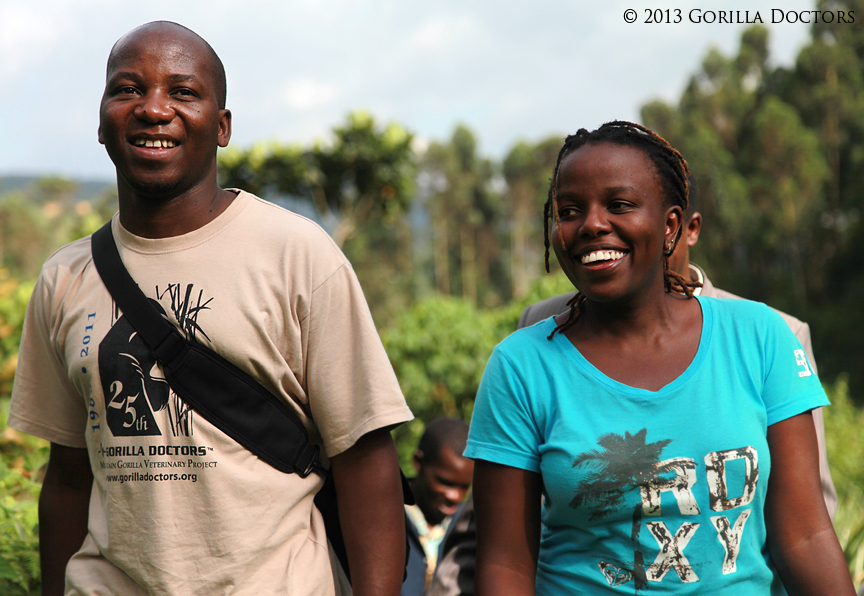 Drs. Benard and Rachael, Uganda PREDICT field veterinarians, investigate the surrounding countryside for bat caves to determine the best location to set up nets.
Drs. Benard and Rachael, Uganda PREDICT field veterinarians, investigate the surrounding countryside for bat caves to determine the best location to set up nets.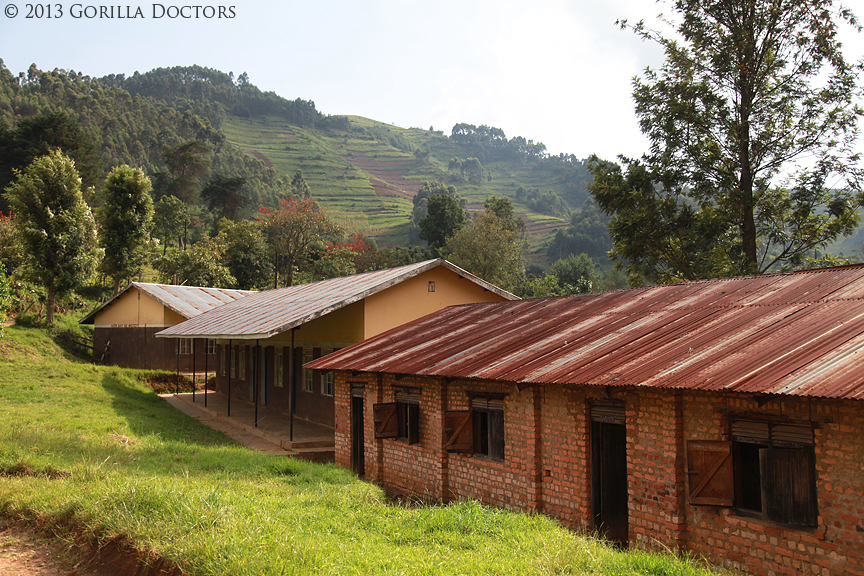 A Ugandan primary school located close to Bwindi Impenetrable National Park is chosen as a sampling site.
A Ugandan primary school located close to Bwindi Impenetrable National Park is chosen as a sampling site.
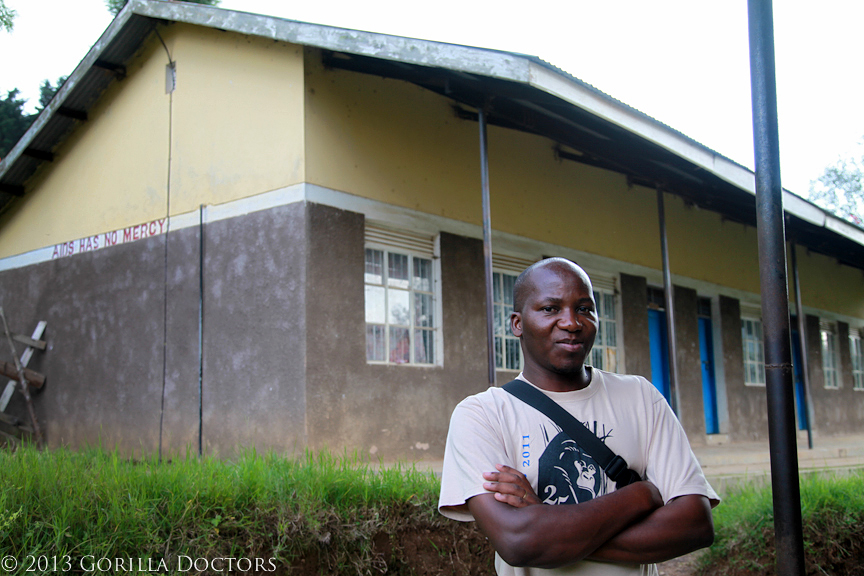 Dr. Benard stops for a photo while walking the school grounds.
Dr. Benard stops for a photo while walking the school grounds.
Once the best locations were determined, Drs. Benard, Rachael and Ricky set up 6, 8 and 12 meter “mist nets” to catch insectivorous bats. The finely sewn black nets were strung up between machete hewn poles just before the sun set.
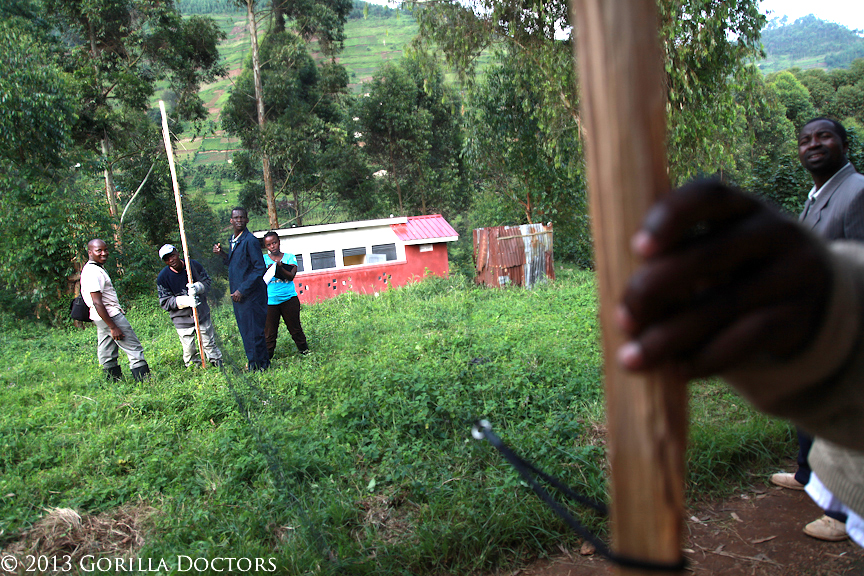 Setting up the nets outside of a Uganda primary school.
Setting up the nets outside of a Uganda primary school.
The final site was chosen for a net, a corridor/valley sweeping up into the school grounds. At this location, the largest net was erected.
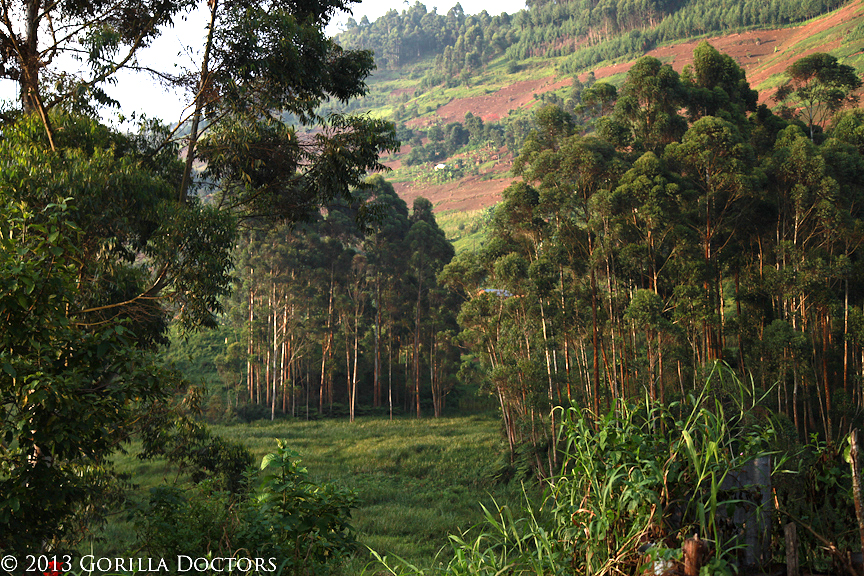
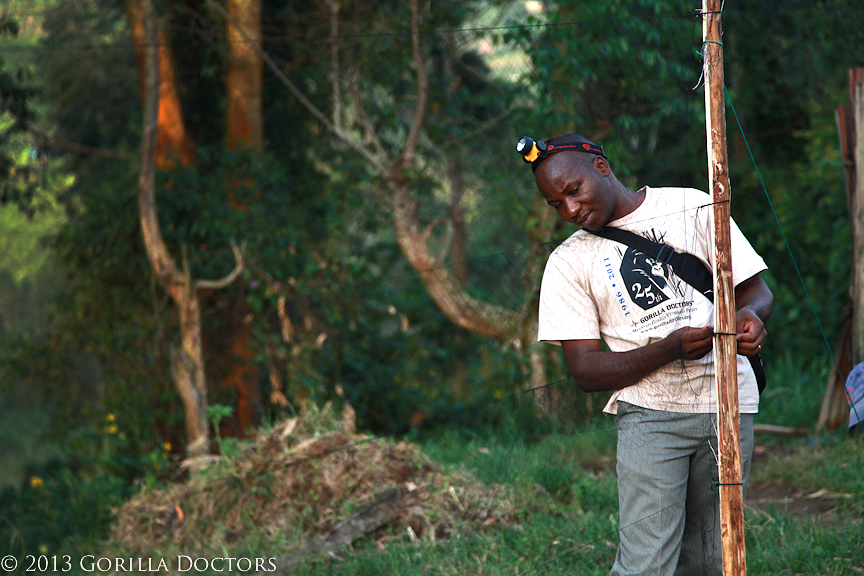
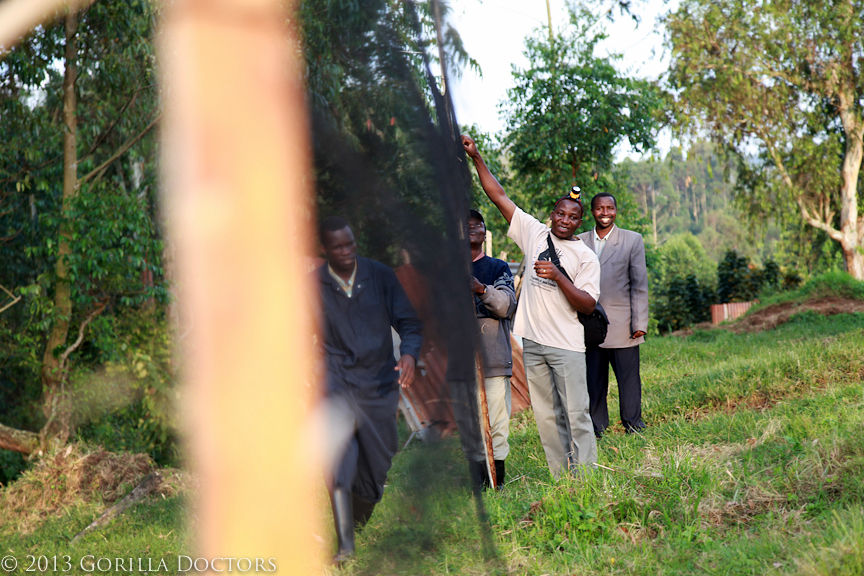
It didn’t take long after the sun went down for the nets to ensnare the first bat:
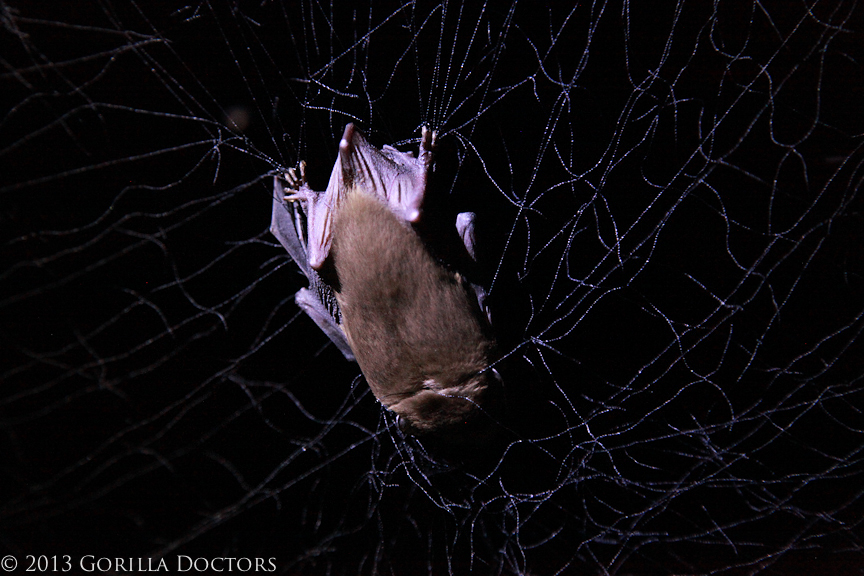
Once trapped, the small animals were carefully extricated from the nets and placed in cotton bags hung on a line, while the vets prepared their sampling equipment.
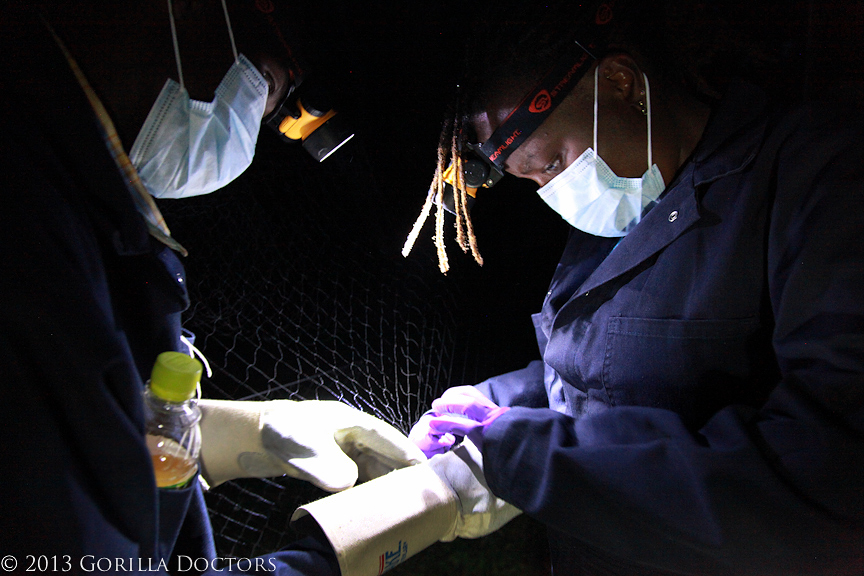 Drs. Ricky and Rachael work to free the bat from the finely woven net.
Drs. Ricky and Rachael work to free the bat from the finely woven net.
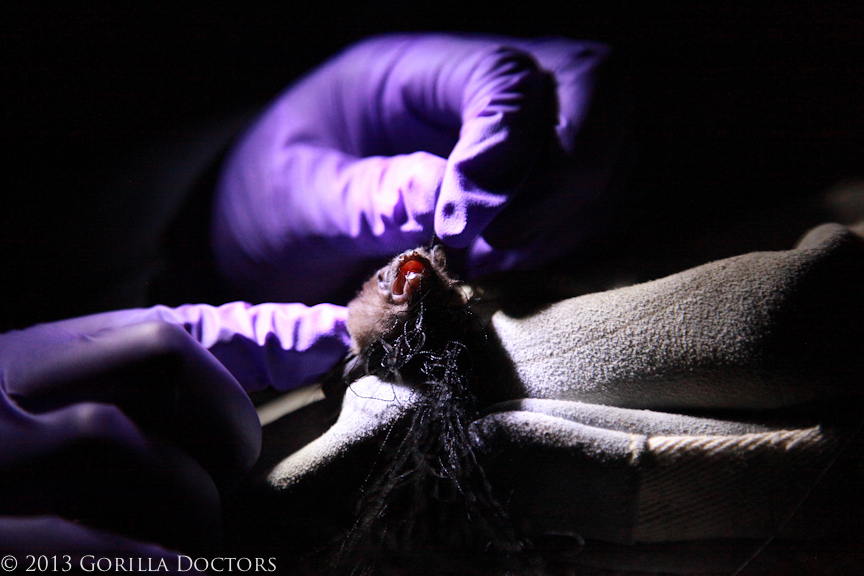
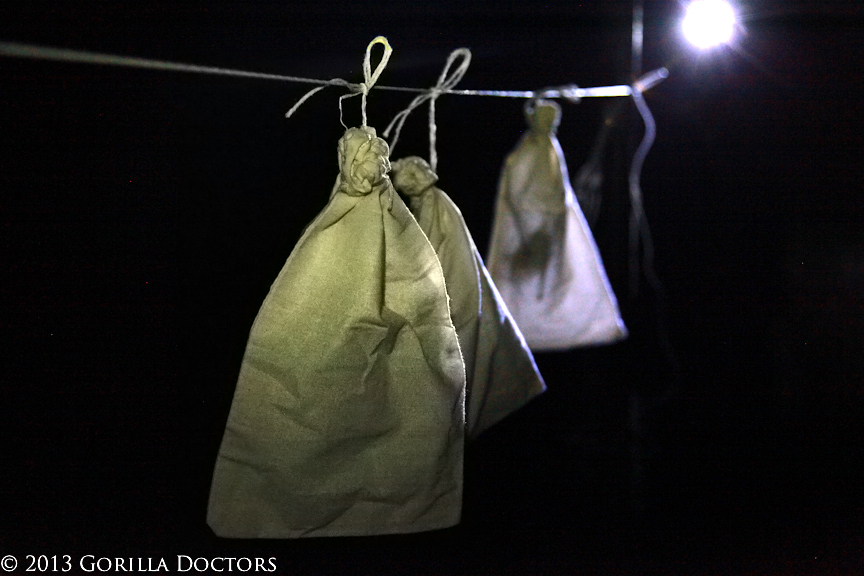 The bats hang out in cloth bags while the vets prepare their equipment.
The bats hang out in cloth bags while the vets prepare their equipment.
After weighing the bag, a cotton ball is soaked in anesthesia and tossed in with the bat. In 5-10 minutes, the anesthesia has taken effect so the bat is then pulled from the sack and the vets carefully and methodically take blood, oral and fecal swabs. 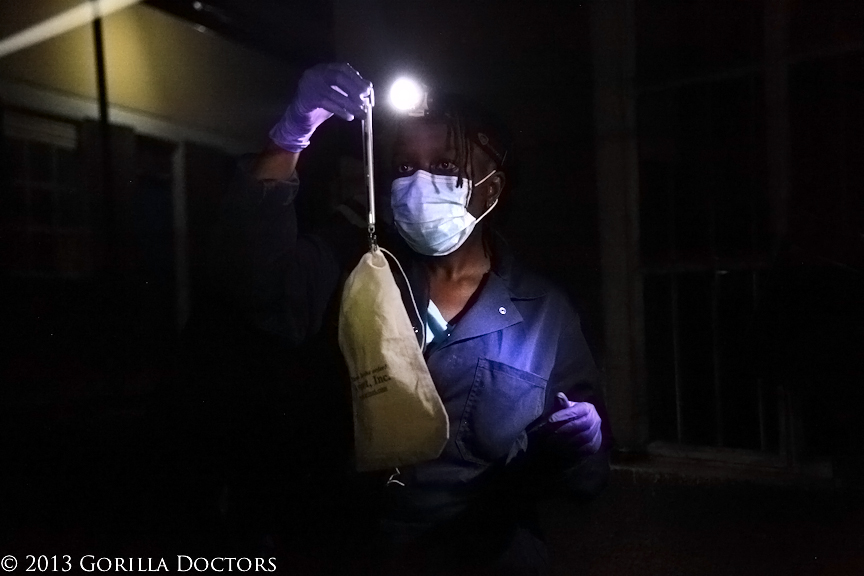 Dr. Rachael weighs a bat.
Dr. Rachael weighs a bat.
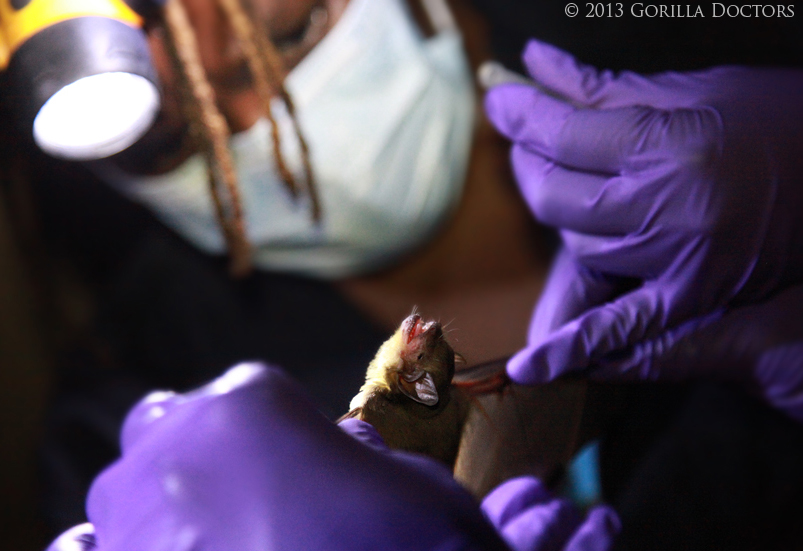 Dr. Rachael takes a blood sample from a bat.
Dr. Rachael takes a blood sample from a bat.
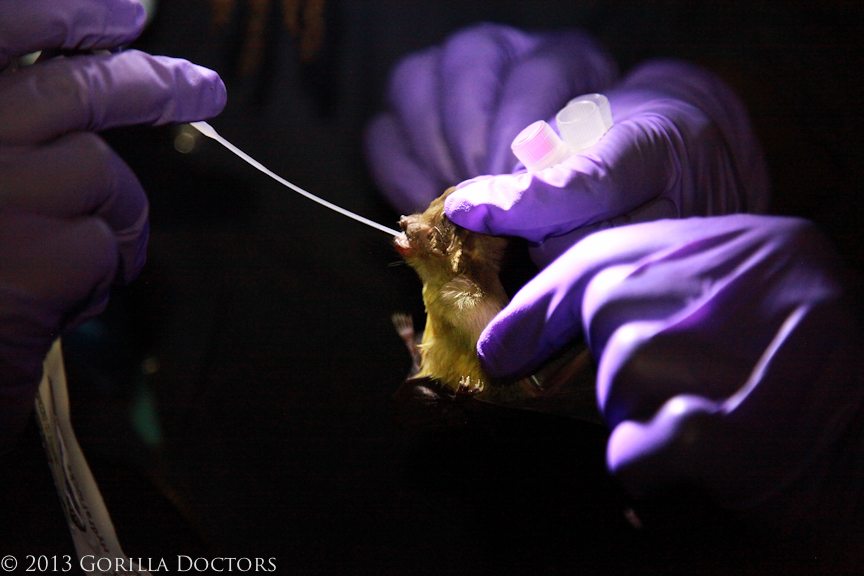 Dr. Rachael takes an oral swab.
Dr. Rachael takes an oral swab.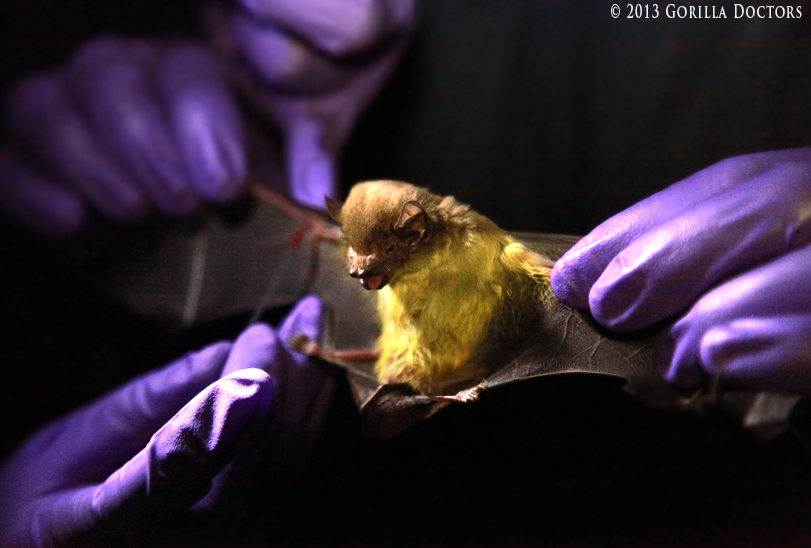 Drs. Rachael and Benard take a blood from an anesthetized bat.
Drs. Rachael and Benard take a blood from an anesthetized bat.
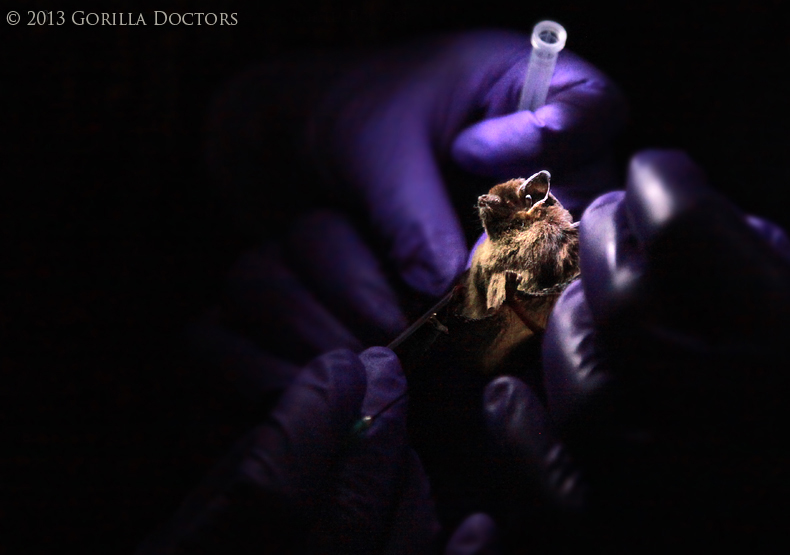 PREDICT doctors take samples from a bat outside of Bwindi.
PREDICT doctors take samples from a bat outside of Bwindi.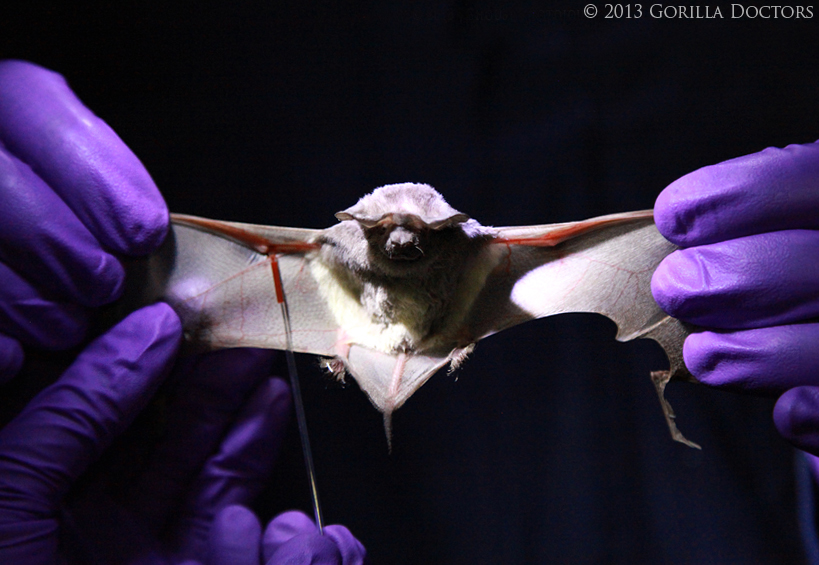 A blood sample is taken from an anesthetized bat outside of Bwindi Impenetrable National Park.
A blood sample is taken from an anesthetized bat outside of Bwindi Impenetrable National Park.
Preliminary processing of the samples is done at Uganda’s Makere University. Here, they are able to determine the viruses at the family level. However, specialized labs are necessary to narrow down and determine the specific type of virus. That type of work requires a biosafety level laboratory, which is not available in Uganda. Once the samples have undergone their initial process at Makere, they are then shipped to Columbia University, where Metabiota, Inc. takes over.
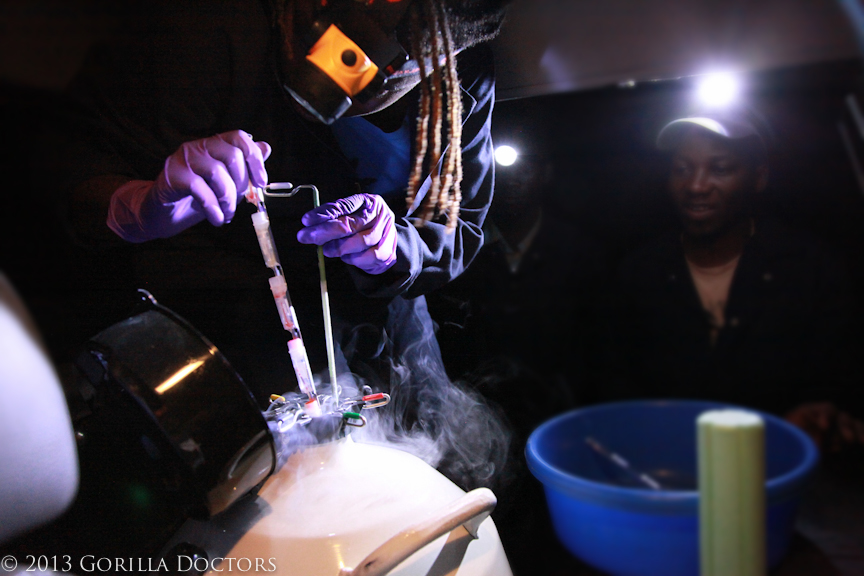 Dr. Rachael loads the samples into liquid nitrogen for transport.
Dr. Rachael loads the samples into liquid nitrogen for transport.
The PREDICT program is led by the UC Davis School of Veterinary Medicine, the Ecohealth Alliance, Metabiota, Inc (formerly known as Global Viral Forecasting, Inc.), the Smithsonian Institution and the Wildlife Conservation Society. For more information about PREDICT, click here.


 Donate
Donate